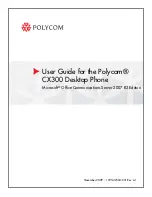
52
Care and safety information
Hospitals
Always make sure that your phone is switched off in hospitals when so instructed by warning signs or by medical staff.
Road safety
Do not use your phone when driving. In order to give your full attention to driving, stop and park safely before making a call.
You must comply with any current legislation.
SAR
This phone complies with European requirements governing exposure to radio waves. Your phone is a transmitter/receiver.
It has been designed and manufactured to comply with radiofrequency energy exposure limits recommended by the Council
of the European Union and the ICNIRP for the entire population. These limits were established by independent scientific
agencies on the basis of in-depth and regular evaluations of scientific studies. The limits include a large safety margin that is
intended to guarantee the safety of all, irrespective of age or state of health.
The exposure standard for phones uses a unit of measure called the SAR, or Specific Absorption Rate. The SAR limit
recommended by the Council of the European Union and the ICNIRP is 2 W/kg (*). Tests were conducted on a standardised
usage position basis, with the phone transmitting at its maximum level certified in all its frequency bands. Although the
standardised measurement is done at maximum power, the real SAR of the phone in use is generally very far below the
maximum value.
The phone was designed to operate at the power level strictly neces-sary to ensure communication with the network. In
general, the closer you are to a base station, the lower the power at which the phone will transmit.
Validation of conformity with European directive 1999/5 (directive R&TTE) is a pre-requisite for introducing any model of
phone onto the market. Protection of health and the safety of the public and the user are a vital requirement of this directive.
This model's maximum SAR value measured at the compliance test for use at the ear was 1.1 W/kg. Although differences
may exist from one phone to the other and depending on position, all comply with European regulations.
Advice for limiting exposure to radiofrequency (RF) fields
For individuals concerned about limiting their exposure to RF fields, the World Health Organization (WHO) provides the
following advice:
Precautionary measures: Present scientific information does not indicate the need for any special precautions for the use of
mobile phones. If individuals are concerned, they might choose to limit their own or their children’s’ RF exposure by limiting
the length of calls, or using "hands-free" devices to keep mobile phones away from the head and body.
Further information on this subject can be obtained from the WHO home page http://www.who.int/peh-emf WHO Fact sheet 193: June
2000.
(*) The SAR limit for phones used by the general public is 2 watts/kilogram (2 W/kg) on average for 10 g of tissue. This
value includes a large safety margin to increase protection and to take account of the variations in measurements. The
SAR information may vary in different parts of the world, depending on declared national requirements and the
frequency bands used by the network.
251970899_myC3-2_lu_en.book Page 52 Mercredi, 16. mars 2005 9:22 09
Summary of Contents for MYC3-2
Page 1: ...S ENGLISH 251970899_myC3 2_lu_en book Page 1 Mercredi 16 mars 2005 9 22 09...
Page 67: ...251970899_myC3 2_lu_en book Page 67 Mercredi 16 mars 2005 9 22 09...
Page 68: ...251970899_myC3 2_lu_en book Page 68 Mercredi 16 mars 2005 9 22 09...
Page 69: ...251970899_myC3 2_lu_en book Page 69 Mercredi 16 mars 2005 9 22 09...
Page 70: ...251970899_myC3 2_lu_en book Page 70 Mercredi 16 mars 2005 9 22 09...
Page 71: ...251970899_myC3 2_lu_en book Page 71 Mercredi 16 mars 2005 9 22 09...
















































